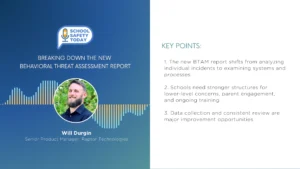Gamified Learning is Helping Students Connect the Dots Through Language
Key Points:
- Gamification is the idea of educators turning the goal of a lesson plan into a game, encouraging topic retention by incentivizing “winning” and engaging challenges.
- Educators need to treat mathematics as a language so students can connect what is happening “underneath” the math.
- The gamified learning market is actively growing, but does growth necessarily mean it’s being applied thoughtfully?
Commentary:
Gamified learning has been a trend in education for years now, a key disruptor for platforms like Duolingo and Kahoot! to find success. The need for a more game-focused, engaging and personalized approach to online education was perhaps felt most acutely during the pandemic, where finding innovative ways to keep remote students actively participating and stimulated became a priority.
In response to this demand for innovative edtech solutions, the gamified learning market boomed to new highs, reaching a value of $697.26 million in 2020. But market growth alone doesn’t capture the “why” behind gamification. For a timely perspective on what role gamification should play in today and tomorrow’s education, pulling from the current conditions of education post-pandemic closures, we turned to Dr. Aditya Nagrath, co-founder of Elephant Learning. Dr. Nagrath explains how Elephant’s approach to gamification of mathematics, and the effect it has on student’s comprehension and retention of key materials.
Abridged Thoughts:
Gamification is the idea that we could turn what would be work or education or some sort of goal into a game. And the reason why this is so important is because if we can turn it into a game, then the consequences of not potentially answering correctly or necessarily accomplishing the goal on the first try becomes “try again.” You see, like when you’re playing a game like basketball, for example, if the ball doesn’t go in the hoop the first time, from a coaching perspective, what you tell the player is to shoot again. And so like, it’s important for the student to get the feeling that they have more than one shot at trying to get whatever it is they’re working on and trying to understand it. So what we really recommend is that you work with your student from the perspective of treating mathematics as a language, a lot actually just boils down to language.








